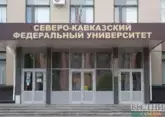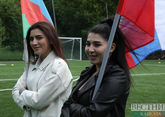On October 25-27, the All-Russian Students' Teams Rally will take place in Moscow. The starting point of the student teams movement was 1959, it existed until 1991. The movement of modern student teams revived in 2004 as a platform for the labor adaptation of modern youth and high-potential employees for economy. Russian students were involved in the construction of facilities for the APEC 2012 summit on Russky Island, the 2013 Summer Universiade in Kazan, the Sochi Winter Olympics and the 2018 World Cup.
"The work of student teams is not just an opportunity for students to realize themselves in the summer, earn money and show their worth in one direction or another, but also the educational process. Not without reason one of the movement's hashtags is 'labor is cool'. Labor education, popularization of labor, professions associated with labor is one of the most important tasks standing before us, civil society and non-profit organizations, before all structures that carry out educational work in our country," head of the Federal Agency for Youth Affairs Alexander Bugaev believes.

The starting point of the student teams movement was 1959, when 339 volunteer students from Faculty of Physics of Lomonosov Moscow State University went to Kazakhstan to develop virgin land during their summer holidays. At its peak, the number of the movement's members exceeded 830 thousand people. Students worked in all spheres of the national economy, on the territory of all the Soviet republics until 1991.
Bugaev thanked the veterans of the student teams movement: "They work in different areas of the economy, and after completing their student activities, after becoming adults, they continue to support the movement, interact with it, transferring their knowledge and experience, helping with the employment of students, being leaders of large corporations and industries."

Development Director of Industry Construction Complex at OCKS Rosatom Andrey Golovanov said: "This year, more than two thousand students worked at 10 sites: five in Russia and five abroad. The guys worked in Turkey, Finland, India, Bangladesh, Belarus. In Russia, more than a thousand people worked at the Leningrad NPP, it was an all-Russian construction site, at the Mayak production association, which is also an all-Russian construction site. We plan to develop movement in the nuclear industry, we see an opportunity to attract our country's most talented youth to our corporation, to our company."










